Not owning a vehicle in New York City has negligible impact on a person’s health. Not owning one in a rural area — or even a booming metropolis like Nashville that lacks a diversified public transportation system — can be life-threatening. This tale of two cities suggests that transportation, perhaps more than any other social determinant of health, illustrates the link between ZIP code, disparities and health outcomes. The importance of transportation Missing medical appointments due to lack of transportation is a stark example of how SDOH can directly impact health outcomes. The ability to get where and when you need to is also connected to other social determinants of health domains such as finance, food and housing. However, one study found that transportation is found in fewer SDOH assessment tools (66%) than any other metric besides social and community context (61%) and physical activity (33%). Addressing transportation inequality begins with knowing how it impacts populations ...
